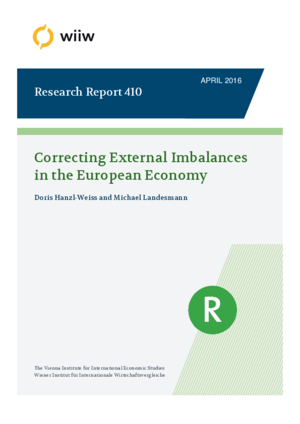Correcting External Imbalances in the European Economy
Doris Hanzl-Weiss and Michael Landesmann
wiiw Research Report No. 410, April 2016
44 pages including 2 Tables and 26 Figures
Summary
This paper examines current account developments in different country groups amongst the lower- and medium-income European economies (LMIEs) both prior to the crisis and following it. The Baltic countries, the Western Balkan as well as the Southern EU countries (Greece, Portugal and Spain) showed rather dramatic deteriorations in their current accounts prior to the outbreak of the financial crisis in 2008/2009, while in the Central and Eastern European countries current account deficits never exploded. What drove current account developments before the crisis and have external imbalances been sustainably corrected? We investigate whether and to which extent adjustments took place in terms of trade performance, real effective exchange rates and components of unit labour costs. Finally, we look at developments of the tradable and non-tradable sectors of the economy and find that ‘structural’ current account problems are grounded in persistent weaknesses of the tradable sector. As such, policy implications would entail that countries which suffer from longer-term ‘structural’ external imbalances have to strongly focus their policy attention on a recovery of the tradable sector.
Reference to wiiw databases: wiiw Annual Database
Keywords: trade and current account imbalances, real effective exchange rates, unit labour costs, structural developments, tradable sector, non-tradable sector, lower- and medium-income European economies (LMIEs), Central and Eastern European countries, Western Balkan countries, Southern EU countries
JEL classification: O10, F14, J3
Countries covered: CEE, Greece, Portugal, Spain
Research Areas: Macroeconomic Analysis and Policy
